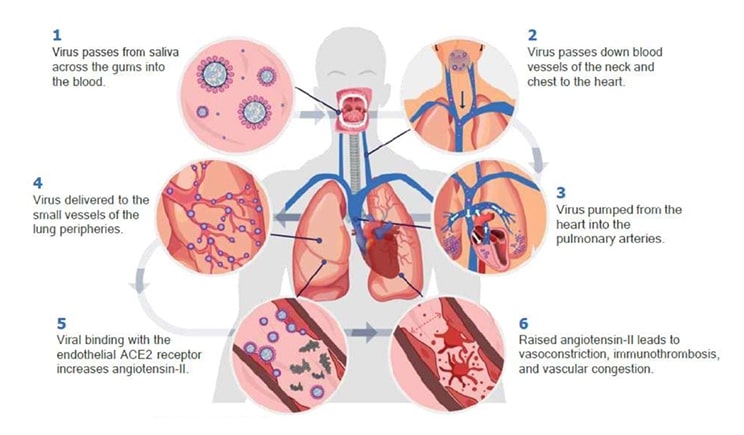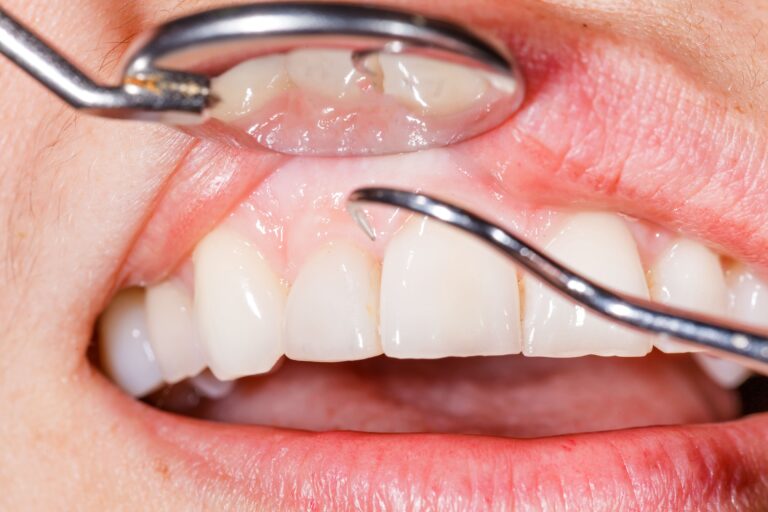Are you concerned about your oral health, but still trying to figure out what periodontology is? As one of the eight specialties in dentistry, periodontology focuses on preventing, diagnosing, and treating disorders related to your mouth’s gums and soft tissues. Learn more about this fascinating field including how it distinguishes itself from general dentistry!
What is Periodontology?
Periodontology is an area of dentistry that specializes in the diagnosis and treatment of gum disease, and the prevention of further damage to gums and teeth. This field of dentistry focuses on the support structures around our teeth, such as the gingiva, alveolar bone, connective tissue attachment, and periodontal ligament. Through periodontal therapies such as scaling, root planing, corrective surgeries, and periodontal maintenance, periodontists work to protect the healthy functioning of teeth and overall health. The health of our gums is crucial to the overall health of our teeth and mouth. Neglecting periodontal health can lead to significant oral health problems, including tooth loss and other severe health issues.
What is periodontal disease?
Periodontal disease, or gum disease, is an infection of your gums that can cause serious damage to your mouth. Left untreated, it can lead to tooth loss and damaged bones due to the inflammation and infection that occurs in affected areas.
There are several types of periodontal disease, including:
- Gingivitis: This is the mildest form of periodontal disease, with symptoms including redness, swelling, and tenderness of your gums.
- Periodontitis: This more advanced stage of gum disease results in pockets of infection around your teeth that can cause extensive damage to the soft tissues and bone surrounding them.
- Advanced Periodontitis: This is the most severe form of periodontal disease, which can cause tooth loss and significant damage to your mouth’s soft tissues and bones.
- Necrotizing periodontal disease: This form of gum disease is caused by bacteria that attack and destroy the soft tissues, bones, and ligaments around your teeth.

Common symptoms of periodontal disease include redness and swelling of the gums, bleeding while brushing or flossing, bad breath, and receding gums. Several factors can increase the risk of developing periodontal disease, including genetics, poor oral hygiene, smoking and tobacco use, diabetes, medications, and hormonal changes. It is essential to be aware of these risk factors and take measures to prevent and treat periodontal disease.
It is important to take periodontal disease seriously as it can have a huge impact on your overall and oral health if left untreated. Besides causing tooth loss, it can also increase the risk of systemic diseases like diabetes or heart disease, as bacteria from the mouth can enter the bloodstream and enter other organs. Furthermore, people with periodontal disease may also be at an increased risk for conditions like pneumonia and bacterial endocarditis, which can lead to serious conditions if not treated quickly.
Early diagnosis and treatment of periodontal disease can help stop further progression of the disease and minimize its long-term effects. Good oral hygiene is essential for preventing gum disease – regularly brush and floss your teeth and make sure you visit a dentist at least twice a year for proper checkups.
Periodontal Treatments
Diagnosing periodontal disease typically involves a physical examination, x-rays, and measuring the depth of the periodontal pockets. Periodontal pockets are the spaces between the teeth and gums that can become inflamed due to periodontal disease.
Fortunately, periodontal disease is treatable with various non-surgical and surgical treatment options. Non-surgical treatments include:
Scaling and Root Planing
This procedure involves deep cleaning of the teeth and gums to remove bacteria, tartar, and plaque that have built up on the surface of the teeth and below the gum line.
During scaling and root planing, the dentist or dental hygienist will use special instruments to remove the buildup of plaque and tartar from the teeth and gums. They will start by scaling the teeth, which involves using a scaler to remove plaque and tartar from the surface of the teeth above the gum line.
After scaling, the dentist or dental hygienist will use a special tool called a curette to remove plaque and tartar from the roots of the teeth below the gum line. This process is called root planing and helps to smooth the surface of the root, making it more difficult for bacteria to re-adhere to the root surface.
Antibiotic Therapy
In some cases, your dentist or hygienist may recommend antibiotic therapy to help fight infection and reduce inflammation. This can be done by applying a topical antibiotic directly to the gums. Topical antibiotics usually come in the form of a gel or paste that is applied directly to the affected area. Antibiotic therapy is generally used in addition to scaling and root planing.
In cases where non-surgical treatments such as scaling and root planing are not sufficient to treat periodontal disease, surgical procedures may be necessary. Three common surgical procedures for periodontal disease include flap surgery, bone and tissue grafts, and guided tissue regeneration.
Flap Surgery
Flap surgery, also known as pocket reduction surgery, is a procedure used to remove tartar deposits from deep periodontal pockets and to reposition the gum tissue to reduce the depth of the pockets. During flap surgery, the dentist or periodontist will make incisions in the gums to access the tooth roots and surrounding bone. They will then remove tartar deposits and damaged tissue. The gums will then be repositioned to cover the tooth roots and sutured so they fit firmly around the tooth. After surgery, the gums will heal, and the patient will need to follow proper oral hygiene practices to maintain good periodontal health.
Bone and Tissue Grafts
Bone and tissue grafts are procedures used to replace missing bone and gum tissue caused by periodontal disease. During a bone graft, the dentist or periodontist will place bone material, either from the patient or from a donor source, into the area where the bone is missing. This bone material will help to stimulate the growth of new bone tissue. Similarly, during a tissue graft, the dentist or periodontist will take gum tissue from another part of the mouth or use donor tissue to replace missing gum tissue. These procedures help to restore the structure of the tooth and prevent tooth loss.
Guided Tissue Regeneration
Guided tissue regeneration is a procedure used to regenerate bone and gum tissue in areas where it has been lost due to periodontal disease. During this procedure, the dentist or periodontist will place a special membrane between the gum tissue and bone to prevent gum tissue from growing into the area where new bone tissue needs to grow. This membrane allows new bone tissue to grow in the area and supports the regeneration of the gum tissue. Guided tissue regeneration can be used in combination with bone and tissue grafts to promote the growth of new bone and gum tissue.
In Conclusion
In conclusion, periodontology is an important dental specialty that is focused on the supporting structures around the teeth and the diseases that can affect these structures. Periodontal disease is a serious oral health issue that requires prompt treatment to prevent tooth loss and other severe health problems. Maintaining good periodontal health involves being aware of the risk factors, taking preventive measures, and seeking professional treatment when necessary. By doing so, we can ensure that our teeth and gums stay healthy and strong for a lifetime.




